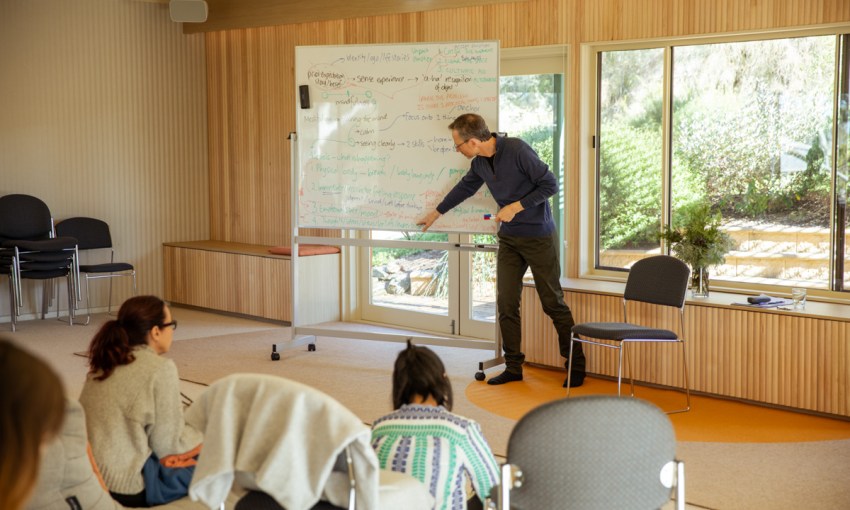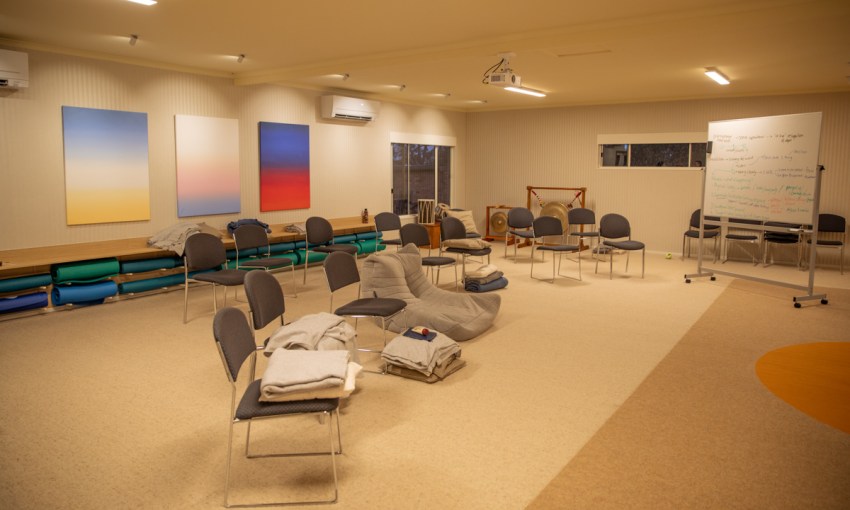In a society where tapping on phones is prized above tapping into thoughts, Angela Skujins attempts the intimidating task of shutting up and meditating for three days at a retreat in the Adelaide Hills.
Idle time
In a warm room surrounded by new faces, I’m told to rock from side to side in my chair, like a pendulum, before finding a natural resting place in the middle and coming to a stop. Michelle Dean Woods, a former Women’s and Children’s Hospital social worker turned meditation teacher, tells the 14 people in the room to be “aware of the air” on our skin, and the way the sled seat touches our back, backside and upper legs as we sit.
After 30 minutes of this contact point meditation, it feels as though all my muscles have slipped off to form a puddle of oily mass around my ankles. “Find the areas of your body that may give you discomfort or pain,” says Michelle, a brunette with big eyes. “And now come back into the room.” After gathering my metaphorically liquified corpse from the carpet, I notice a tightness in my chest and something in my eyes. When was the last time I allowed myself to just sit?
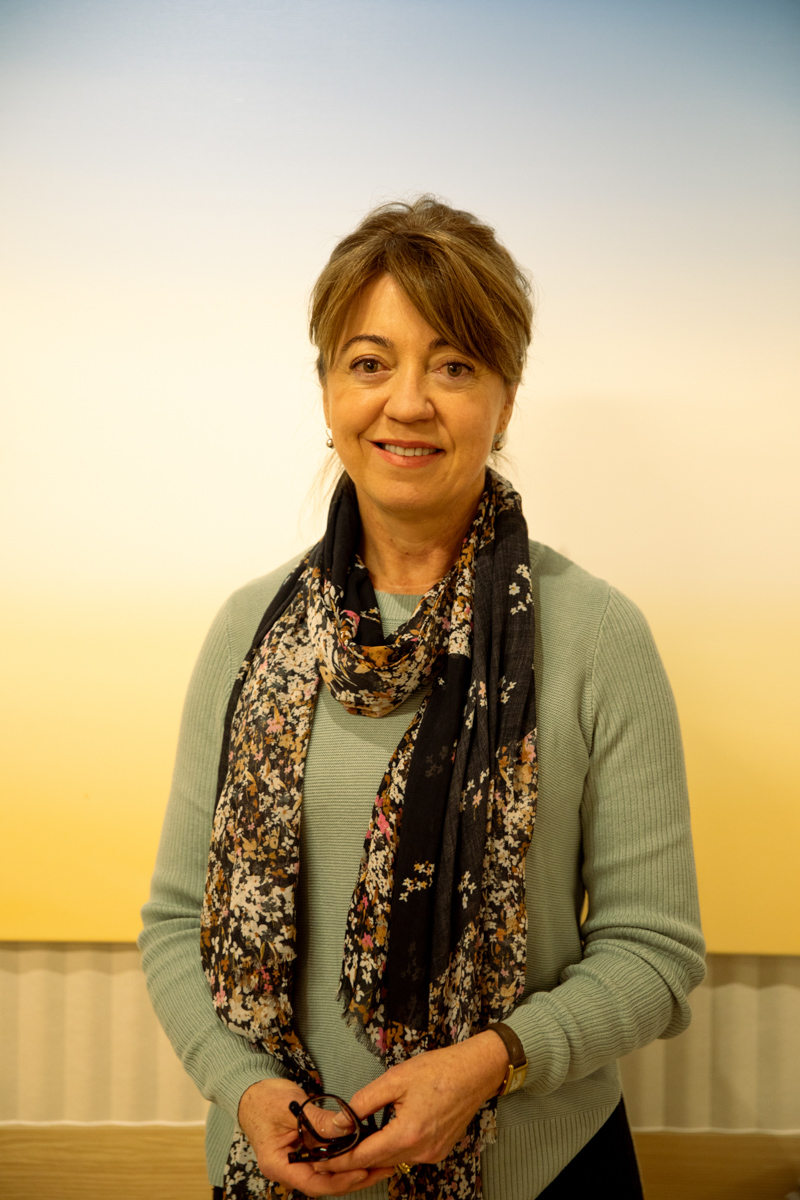
Michelle Dean Woods
For many, meditation in 2022 conjures up aesthetic hallmarks of loose pants, chakra tattoos and green smoothies. The practice originated in India thousands of years ago, but gained popularity in the west with the ‘70s hippie movement. It is now ostensibly an activity reserved for those who want to check out of the real world.
I have firsthand experience with such people. My dad dropped his high-flying career to travel around Australia in a van, searching for spirituality through austerity. (This includes sitting cross-legged in tattered jeans and meditating.) When I tell him about my upcoming three-day assignment – to discern whether a meditation retreat is helpful or hokey – he says many people are “unwell” and “need” the time away. The publicist who pushed me for this story said if more people meditated there would be fewer world wars.
Over a May weekend in the frost-bitten hills of Nairne, at a Lifeflow Meditation Centre retreat called Moment to Moment, I discover people whose intentions for taking part in this historic practice is to develop skills to help them get back on life’s treadmill, rather than stepping off.
At 5pm on Friday, I’m driven 53 minutes from my Goodwood rental to the bespoke 24ha retreat village known as Tara Hills. Thundering up the freeway, my mum and I pass agricultural fields dotted with the odd cow or idle tractor. It’s bucolic.
“It looks like the forest from Wicker Man,” Mum says, before booting me out of the car. Wiry Lifeflow instructor John Burston greets me wearing a neat crew-neck sweater and RM Williams boots. He’s my lifeline for this weekend, and stands at the entrance flanked by large eucalyptus trees and some smaller low-lying shrubs.
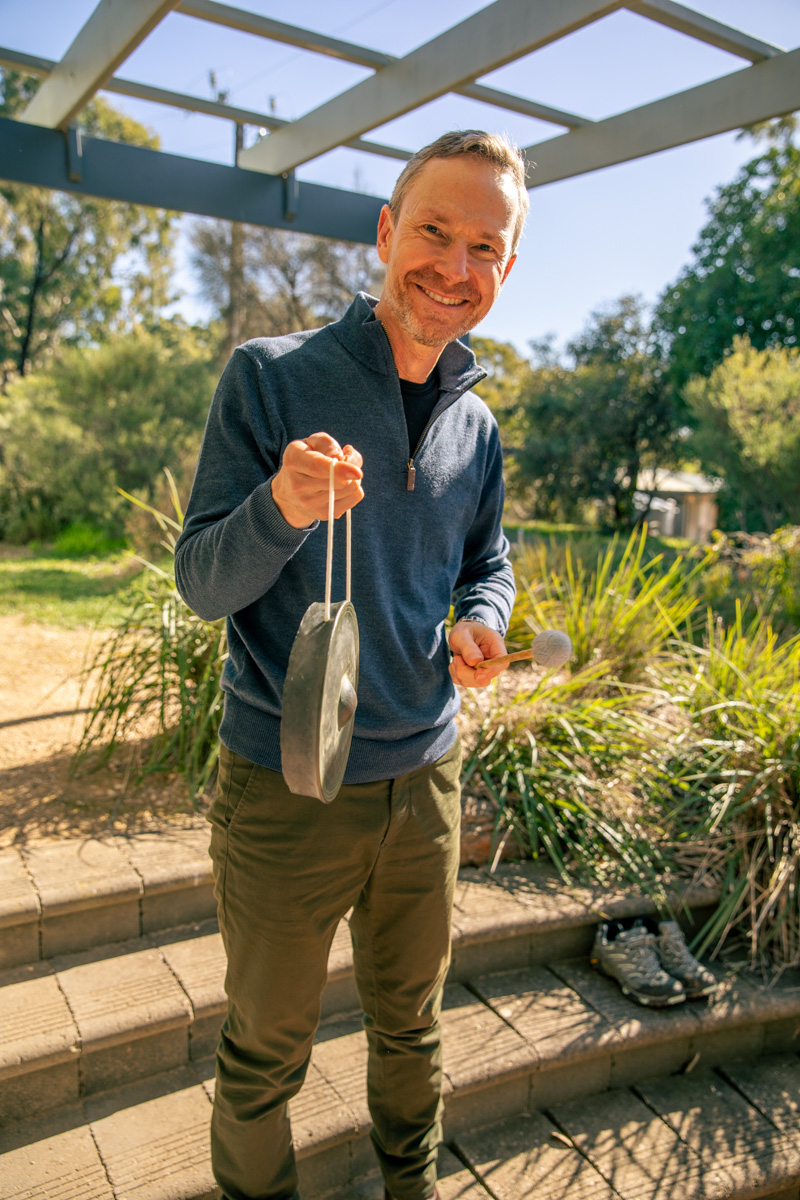
A fitting welcome from John Burston
While walking me to my room, John says he started at Lifeflow as a participant 30 years ago and is now a teacher. Alarms are banned here, he says, and we’re instead recommended to “trust our bodies” to wake us up. John hasn’t set an alarm for 25 years.
In my room, there’s a laminated paper sign stuck to one of the walls:
THE BUILDING IS
FOR RETREAT.
Meditation retreat work depends
on solitude and awareness.
~ Please ~ Maintain silence as
much as possible.
Always move with awareness,
opening and closing doors quietly.
Before I commit to my vow of quasi-silence, I speak to a retreat regular, life coach, yoga teacher, pet-grief author and “Virgo”, Lara Casanova. Now the practice manager of a vet clinic, she communicates a sense of enthusiasm and openness over the phone, and explains that before finding meditation in her early twenties (she’s now 54) she was a party animal. New here? Sign up to receive the latest happenings from around our city, sent every Thursday morning.
“Loved to drink champagne, smoke cigarettes, stay out late,” Lara says. Combining this chaotic lifestyle with an enduring need to do well at work, she eventually imploded. Meditation helped piece herself back together. “Rather than always looking for the next exciting thing, it’s just being able to see the stillness, the solitude, nature,” Lara says.
On the first night of the retreat, I sit at a table in the mess hall with a group of middle-aged women. Despite a general recommendation to not use our phones, talk or read books (other than the sanctioned Lifeflow-published literature), we can gasbag as we like tonight.
Bec is a project manager from Sydney. She’s wearing black exercise tights and a Kathmandu down jacket. Despite our diametrically opposed lives (she has wealth, I do not), she’s got a manic look in her eyes I recognise. “I’ve got the mindfulness apps,” she admits, “but I don’t use them.”
“Coming to this retreat is about calming what’s up here,” she says, knocking on her temples. As an anxious person, I can relate. Before the weekend, I spoke to John on the phone about my reservations. A philosopher I adore, Michel de Montaigne, once said “the greatest thing in the world is to know how to belong to oneself”. This, as a concept, is terrifying. I’m used to cluttered distractions in my rear-view mirror. It’s normal to be nervous, John tells me.
“Nearly everyone gets it, where you wonder what it will be like, so what will the people be like, the teachers? Will I be able to get on with the teachers? Will they be weirdo nutters?” John says. “But the main thing, I’d say, is be prepared to have a go.
“I’m from a science background – with IT, maths, computing, engineering – and I thought the same myself from an early start. But I read about it, and I thought there might be something in this, so I thought, well, give it a go, and that’s actually the whole discipline of science: to keep an open mind and try things and see what happens.”
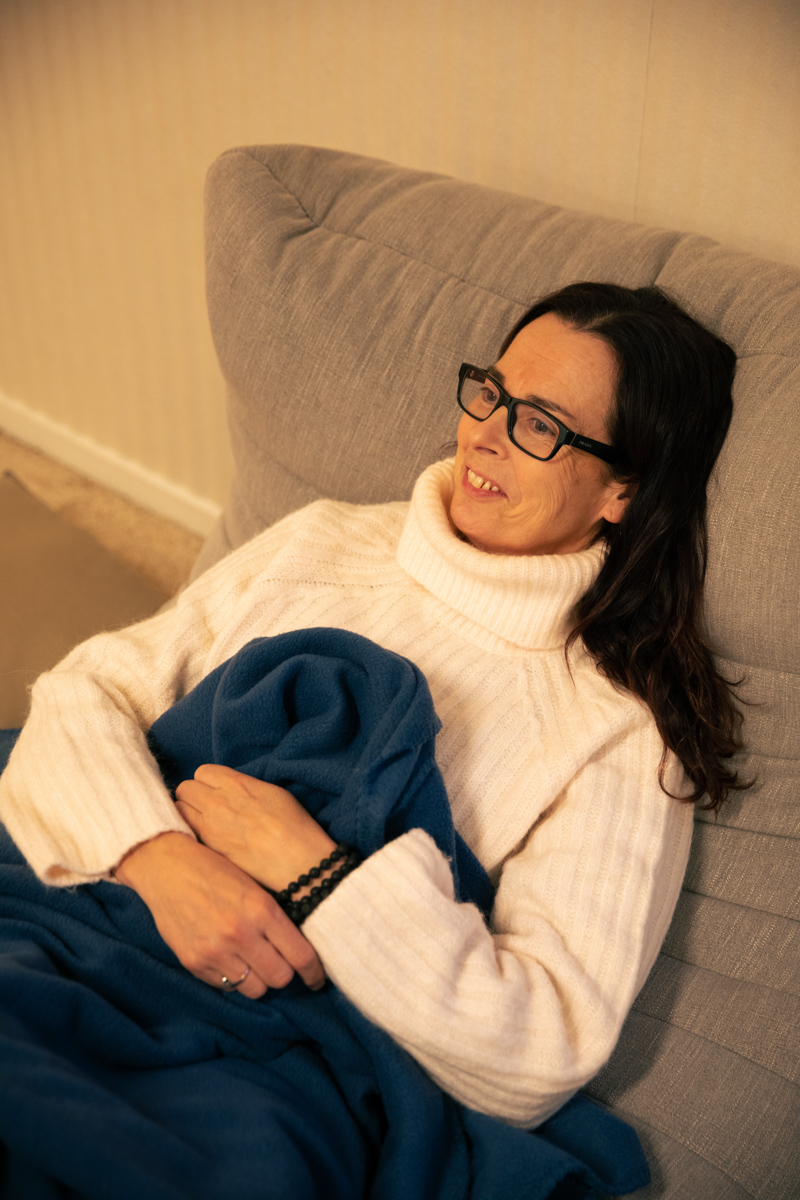
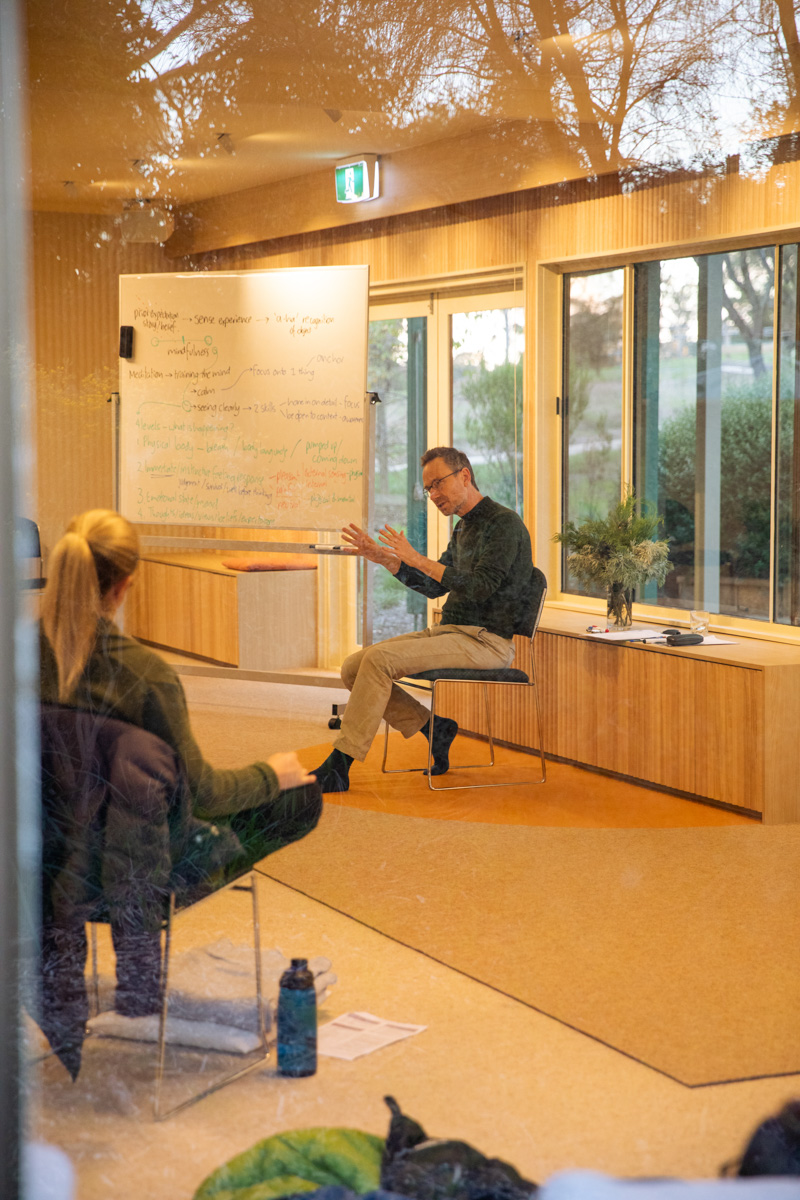
When asked whether Lifeflow, the 40-year-old meditation centre headquartered on Glen Osmond Road and owner of this hills’ oasis, is growing in membership, John says it ebbs and flows. There are many ways to be mindful these days, spanning smartphone apps, YouTube clips and courses.
Or, some people use recreational drugs, such as hallucinogens, to “open up deeper aspects” of their mind, John says. But this weekend is for those who want to sink into their parasympathetic nervous system – the one beneath the surface-level fight and flight reactions – and maintain peace beyond the momentary high.
There was a moment on the second day of the retreat that was indicative of my overall experience. John had us sitting outside, where we were surrounded by the warbles and wails of galahs, crows, magpies and corellas. In a voice that sounded like velvet, he prompted the group to notice the breeze on our face “and the sounds that are just sounds”. Instead of melting into the ground, I focus on the birds and the wind. John later says this feeling is a “birthright”. “It’s something you deserve to feel,” he says.
On Monday, I return to my desk in the CityMag office. I feel the aircon’s arctic blast on my arms, and can hear my colleagues tapping away on their computers, filing frenzied new stories before deadline. A small multicoloured cardboard booklet filled with ‘spot’ (aka short) Lifeflow meditations sits next to my computer. As my own deadlines loom, I use them.
Though the concept of meditation these days might conjure images of puffer vests as much as prayer beads, taking a moment to feel the (interior or exterior) breeze on your face is a simple joy awaiting anyone willing to give it a go.
Angela was invited to the Moment to Moment retreat as a guest of Lifeflow Meditation.




